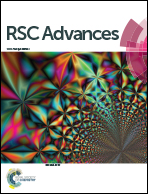Variations of cellular components in Thermosynechococcus sp. CL-1 under electrochemical treatment
Abstract
To investigate the potential for biofuel production by using cyanobacterium photosynthesis integrated with electrochemical treatment, several protein expressions and cellular components were experimentally analyzed. Thermosynechococcus sp. CL-1 (TCL-1) was chosen because it shows a significant photocurrent response at 0.4 V without the addition of artificial mediators in an H-type two-compartment electrolysis cell. The crude lipid content in the TCL-1 cells in either the anodic membrane or the suspended medium at 0.4 V was higher than that of the control experiments. In addition, the cells attached to the anodic membrane showed a considerably higher crude lipid content and lower carbohydrate content compared with the suspended cells. The experimental results show that electrochemical treatment redistributed the cellular components and proteomics of TCL-1 in the suspended medium and anodic membrane without increasing the total production.


 Please wait while we load your content...
Please wait while we load your content...